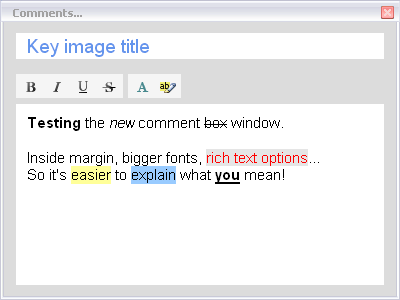Version expérimentale : elle a besoin de vos retour d'expérience pour s'améliorer !
L'installeur est dispo ici : Kinovea.Setup.0.8.9.exe
Pas mal de trucs intéressants selon moi dans cette version, les plus importants étant :
Dual Export
En mode "Deux écrans de lecture", vous pouvez exporter une capture d'écran combinée ou une vidéo combinée (respectant la synchronisation), c'est-à-dire côte à côte.
Utilisez les boutons d'export en bas à droite.
Écran de capture
Cela faisait un moment qu'il était en phase d'incubation, il est maintenant temps qu'il fasse ses débuts…
Il est loin d'être complet d'un point de vue fonctionnel, mais c'est fait exprès. Ce sont vos retours qui guideront les additions / améliorations 
Ce qu'il devrait être possible de faire : capture d'image, enregistrement de vidéos, dessins sur l'écran (y compris les grilles et les références d'observations).
Ce qu'il n'est pas encore possible de faire : Délai sur le direct, navigation dans l'historique récemment capturé.
Uniquement testé avec un camescope DV basique et une webcam à moitié cassée, donc merci de remonter les échecs et réussites ici.
Texte enrichi dans les commentaires
Gras, italique, couleur de fond, etc. voir capture d'écran dessous.
Des icônes partout dans les menus
La plupart des icônes proviennent du pack libre Silk de famfamfam ou en ont été dérivées.
Également correctifs des bugs suivants : m207, m210.
Capture d'écran : la nouvelle boîte de commentaires.






